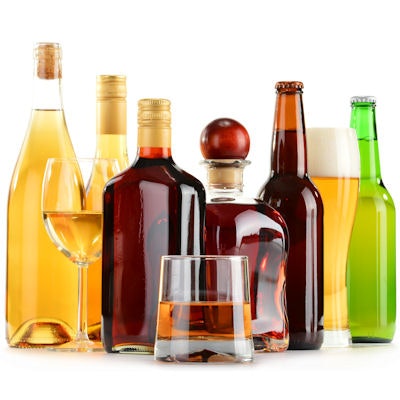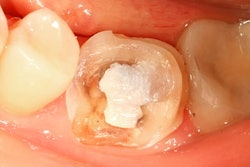
When patients report smoking cigarettes or frequently drinking alcohol, you probably automatically think of their increased risk for caries and periodontal disease. However, you may want to also check for bruxism during your exam.
A new study found those who smoke cigarettes and binge drink have an increased risk for sleep bruxism. The study authors hope dentists will use their findings to screen at-risk patients for the condition, which can lead to tooth wear and fractures, periodontal disease, and headaches.
"Because results of our [systematic review] indicated that there is some available evidence of the possible association between [sleep bruxism] and alcohol, caffeine, and tobacco, dentists should be aware of this possibility during the first dental appointment," wrote lead study author Eduardo Bertazzo-Silveira, DDS, and colleagues (Journal of the American Dental Association, November 2016, Vol. 147:11, pp. 859-866).
Dr. Bertazzo-Silveira is currently pursuing his master's degree in oral diagnostics from the Federal University of Santa Catarina Department of Dentistry in Brazil.
Risk factors for bruxism
Bruxism is a fairly common condition, affecting between 8% and 31% of the population, depending on the study. Although both daytime and nighttime bruxism can lead to a number of health problems, the causes of the condition are not well-understood.
Previous studies have shown an association between sleep bruxism and alcohol, caffeine, and cigarettes, but the authors of the current study could not find an existing review to validate the link. They set out to conduct a systematic review to see if those "drugs" had a positive association with sleep bruxism, they wrote.
Dr. Bertazzo-Silveira and colleagues used multiple search databases to compile a list of studies that evaluated this topic. They looked for studies with adult patients and excluded ones in which patients had a neuromuscular disease or were taking medication. They also excluded letters, reviews, conference abstracts, and personal opinions.
The researchers ended up with seven articles in their review, each with a sample size ranging from 51 to more than 10,000 participants. Most articles diagnosed sleep bruxism by a questionnaire, although some also used examination by a clinician or polysomnography to diagnose the condition. Polysomnography is a type of sleep study that records a patient's brain waves, blood oxygen levels, heart rate, and breathing, as well as eye and leg movements.
Both tobacco and heavy alcohol use about doubled the odds of a participant showing signs of sleep bruxism, according to the review findings. In addition, the studies that investigated the link between sleep bruxism and alcohol and tobacco showed only low to moderate signs of bias.
| Sleep bruxism odds ratio | |
| Behavior | Odds ratio |
| Current smoker | 2.9 |
| Binge drinking | 1.8 |
| Heavy drinking | 1.7 |
| Consuming more than 8 cups of coffee | 1.5 |
"The intake of large quantities of alcohol in a short period results in toxic effects on the brain and also may be related to the CNS [central nervous system] disturbance that could set off or exacerbate [sleep bruxism]," the authors wrote. "In addition ... [sleep bruxism] was significantly more prevalent among smokers. Possible explanations were that nicotine may affect the smoker's pain response centrally or that tobacco use may reduce the blood supply to tissues."
Dr. Bertazzo-Silveira and colleagues also found that participants who consumed more than 8 cups of coffee per day were more likely to have possible sleep bruxism. However, the research supporting this finding was relatively weak, especially compared with the studies on alcohol and tobacco.
"Caffeine is a CNS stimulant, and it is the world's most widely consumed psychoactive drug," the authors wrote. "Consumption of a high quantity of coffee raised the risk of occurrence of [sleep bruxism]. However, these findings remain controversial."
Clinical implications
One concern the authors had about the studies included in their review is that homogeneity wasn't reported. Therefore, the original studies may not have been randomized or representative of a large, diverse population. The authors also didn't place a date filter on the studies, and some of the included studies are more than 40 years old.
Nevertheless, the results are important for dentists in clinical practice, who treat patients with these risk factors every day. Dr. Bertazzo-Silveira and colleagues hope dentists will be able to identify those with sleep bruxism and that researchers will continue to look into other factors associated with the condition.
"This knowledge also may aid in the diagnosis of [sleep bruxism]," the authors wrote. "Dentists should advise their patients to reduce or eliminate the excessive use of alcohol, caffeine, and tobacco and also may refer patients to an addiction specialist if needed."



















